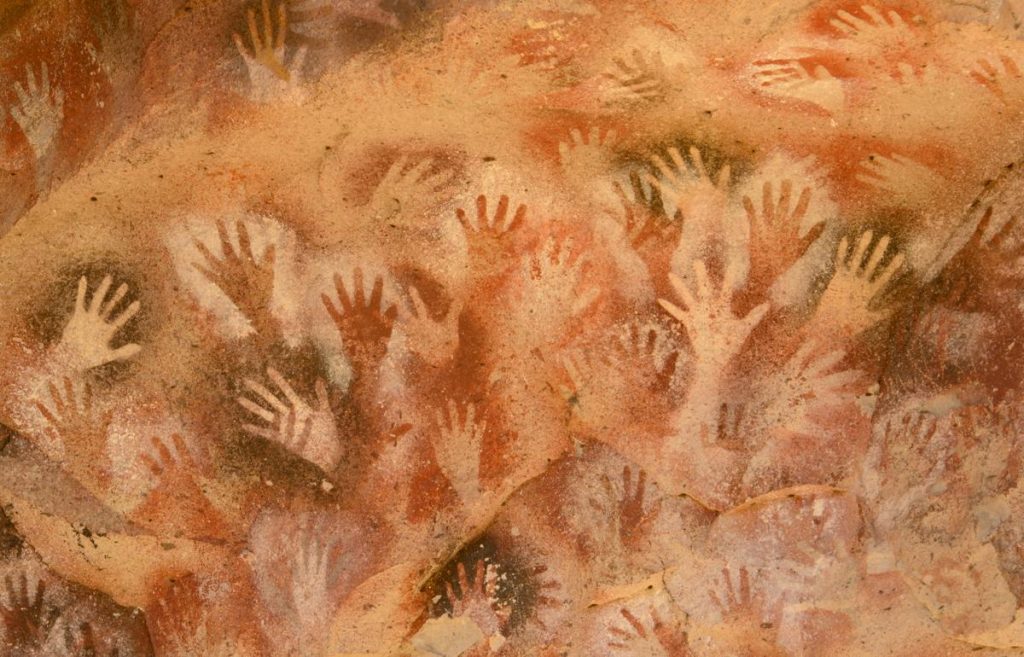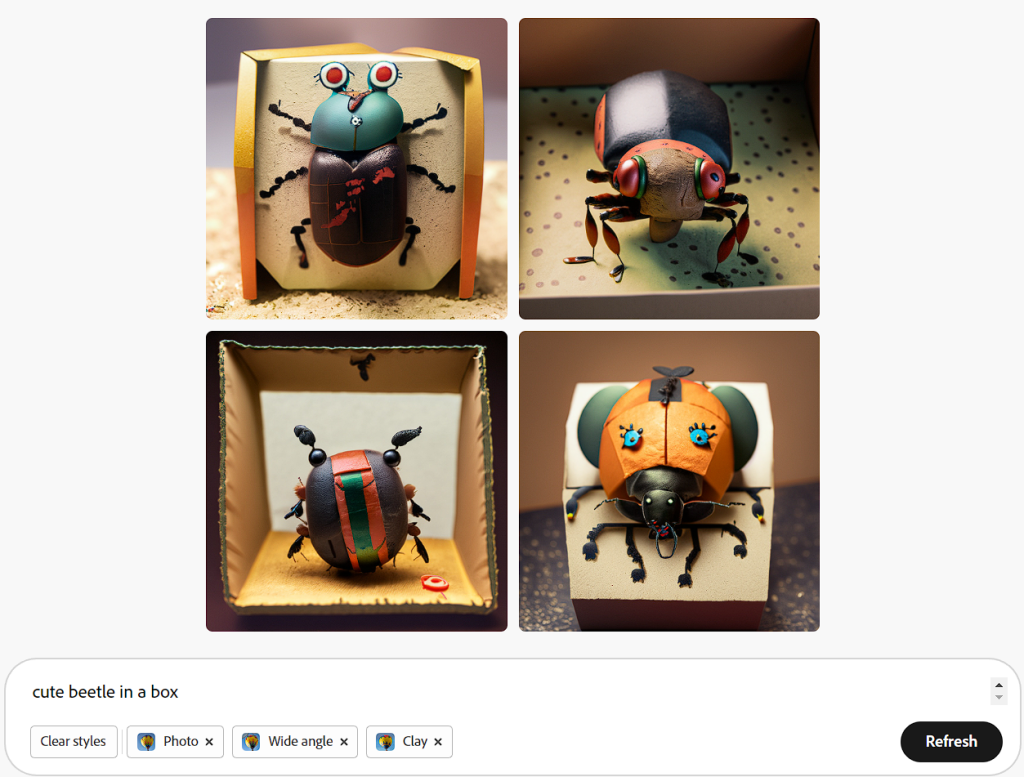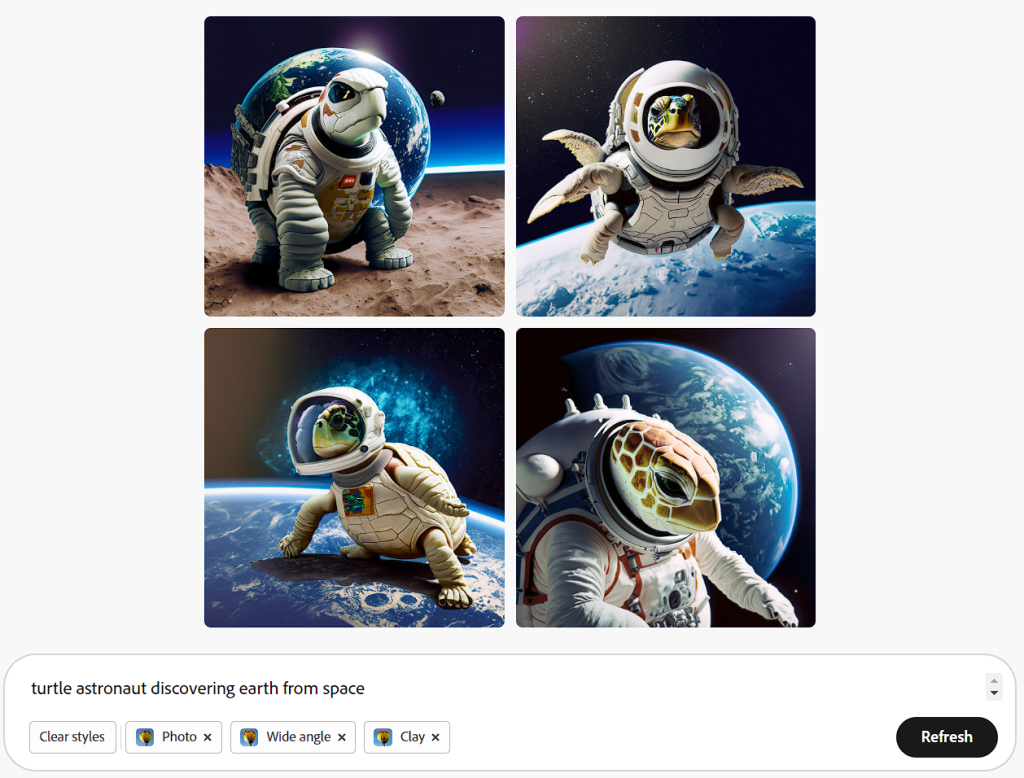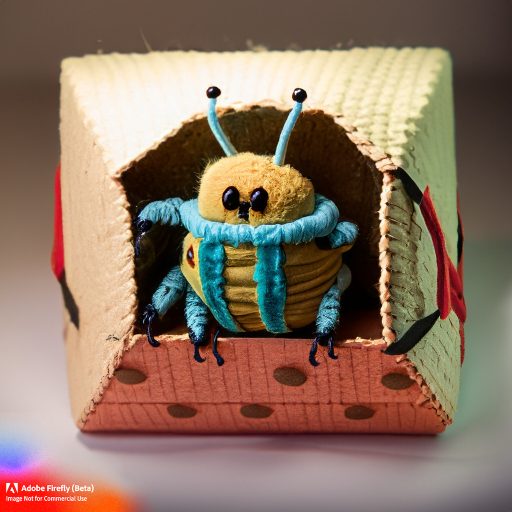Depiction

Today I got access to the Adobe Firefly Beta. Adobe’s own website says: “Firefly is the new family of creative generative AI models coming to Adobe products, focusing initially on image and text effect generation.”
Image generation has historically been an endeavor closely guarded by the barrier of skill and dedication. Image generation falls into the broader category of giving thoughts material form, whether it be writing or beatboxing or painting the Sistine Chapel…
We have known for a long time that preservation is a form of immortality, mighty Achilles walked towards his destined end to achieve eternal glory and undying fame. We chewed and spat dyes on the walls of the cave in Lascaux to preserve the simplest message in the hardest of times: we were here.
I was not there, but I feel close to the overall sentiment that must have been the talk of the town with the advent of photography. “Do we need painters for portraits? Cameras still can’t capture color so there will still be a demand, but for how long? What happens when cameras achieve perfect portraits, perfect colors as we see them?”
I am no art historian but the Realism movement came precisely before photography, and from my understanding the value of neither truly diminished in the annals of history. Impressionism, cubism, surrealism… all followed realism and art and artists continued to move us.
A powerful phrase I hear today with AI is that AI will “replace the B+, but not the A+”. Perhaps this was true with the forgotten Realist back then, the B- realist portrait artist who could do your family justice on canvass, but could not compete with the unforgiving machine accuracy of analog photography.
Please look at my beetle
Ludwig Wittgenstein developed his Private Language argument and gave us the useful concept of the beetle in the box to symbolize our lack of access to each other’s thoughts: I have what I know to be a beetle in a box, I ask you if you have a beetle in a box and you say yes. No one can look into anyone else’s box, and everyone says they know what a beetle is only by looking at their own beetle.
This is a profound barrier and testament to our ability to make due with good enough. We write literature, we have color theory, we are able to write dictionaries, all without knowing for certain what those thoughts are within each other’s minds; what the beetle is. This may even have profound implications on the concept of objective reality and if you are having an existential void-like panic in the back of your brain I would like to personally welcome you to philosophy, it doesn’t get better but the folks are nice.

As profound a barrier as Wittgenstein’s beetle is, I find it to be an equivalently profound human achievement when a beetle is taken out of the box and presented for your consideration. For better or worse, we are finally talking about the same beetle.
Photography’s exact accuracy took us a long way, and video is still a miracle worthy of admiration. To capture the outside world is to be able to give form to the beetle of memory and we often find that beetle was a little off. Nostalgia colored beetles humble us, and we insist the best cameras are wrong if they don’t capture my good side in the right lighting.
Generative AI such as Adobe Firefly is a real earnest attempt at giving life to the beetle of the mind.
Text to image to text to image

Far be it from me to tell professional creatives how to creatively adapt. But I would like to share what I feel generative AI has added to my life.
My preferred art format is music, and music has had a truly rich dialog concerning copyright, and its place with the existence of competitors and replicas. Up until recently music was exclusively artistic expression.
Pneumatic player pianos which played themselves provided a proto-jukebox for establishments, and now we have background stock country guitar music for video tutorials on buffing out a scratch in your car paint. These just needed to get the job done: provide satisfactory background.
Visual art has a similar dichotomy: while there is undeniable value in Salvador Dali designing the Chupa Chups logo, there still a need for generic customer support websites. Not all of them can afford to be famous artists’ canvases. Some just need good communication.
Generative AI has given me the tools to create, if not a final product, then a means to bridge my beetle in the box with my capacity to describe and the artist’s capacity to understand my way of describing my ideas.
Looking to the Future

Photography became an artform and a tool on our phones and a tool for visual artists.
Synthesizers and digital audio manipulation became the bedrock for entirely new forms of music.
I cannot wait to see what our artists will do with a tool like generative AI.
I raise a toast to those who helped bring my beetles out of the box and into reality.
Thank you
ABOUT THE AUTHOR

Nawar Kamel is CEO and Co-Founder of Experto AI Inc., and licensed Canadian lawyer in Ottawa, ON, Canada.
Nawar started his academic path studying philosophy and went on to get his masters in philosophy focusing on social contract theory from York University. Nawar graduated from the University of Ottawa Faculty of Common Law and was a litigator spending his days fighting in the courts on behalf of his clients until he went on to found Experto AI Inc., which was established to create AI tools geared towards lawyers and legal researchers.

